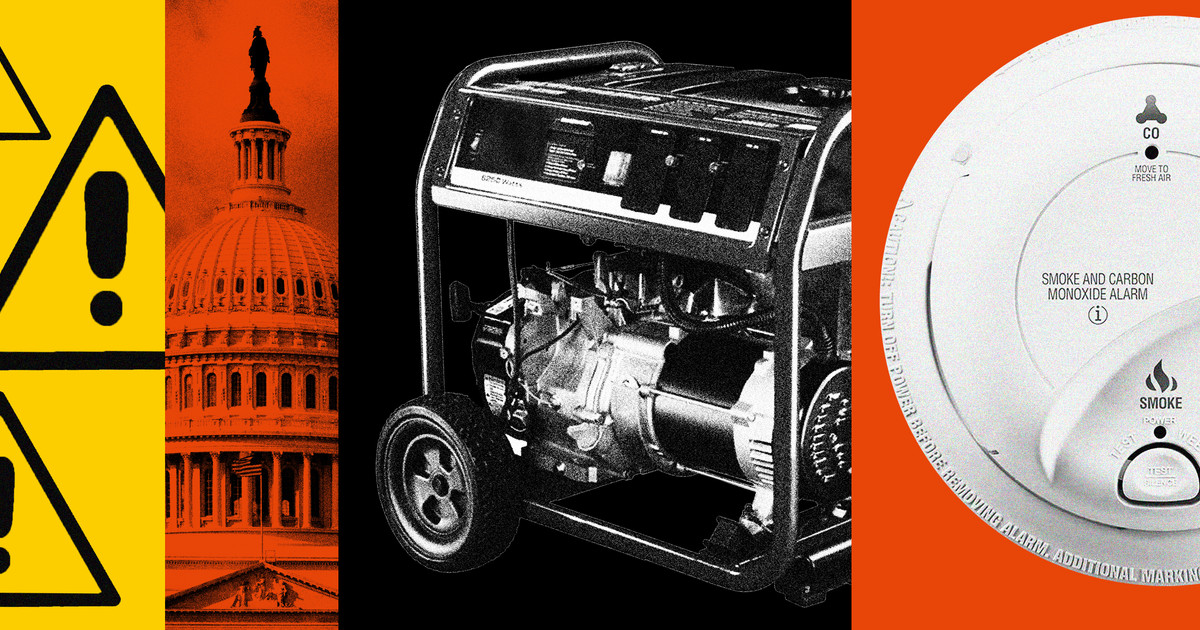|
Getting your Trinity Audio player ready...
|
This article is co-published with The Texas Tribune, a nonprofit, nonpartisan local newsroom that informs and engages with Texans. Sign up for The Brief Weekly to get up to speed on their essential coverage of Texas issues.
This article was also produced in partnership with NBC News.
BETHESDA, Md. — The federal government is moving forward with sweeping new regulations to make portable generators safer, citing the increasing number of deaths they cause and the failure of manufacturers to protect consumers.
On Wednesday, the Consumer Product Safety Commission voted unanimously to advance a proposal that would require portable generators to emit less carbon monoxide and to shut off automatically when the deadly gas reaches a certain level. The invisible and odorless gas emitted by the devices claims an average of 85 lives a year, making generators one of the deadliest consumer products the CPSC regulates.
If the proposal is finalized, it will be the first time that the federal government will require companies to manufacture generators that protect consumers against carbon monoxide poisoning — the most significant step that the agency has taken after decades of studying the hazard.
“This issue has been going on for too long, and too many people have been dying each year,” CPSC Chair Alexander Hoehn-Saric said shortly after Wednesday’s vote. “It’s a tremendous step forward.”
The agency’s proposal comes in the wake of an investigation by NBC News, ProPublica and The Texas Tribune that revealed the lack of safeguards underpinning the worst carbon monoxide poisoning event in U.S. history. In Texas, at least 19 residents died from carbon monoxide poisoning and more than 1,400 others were treated in emergency rooms during a winter storm that pummeled the state in 2021, the news organizations found. At least 10 of those deaths involved generators.
“The importance of safety for portable generators will only grow as demand for them grows in the face of extreme weather events,” Commissioner Mary Boyle said during Wednesday’s meeting.
The Portable Generator Manufacturers’ Association, the industry’s largest trade group, said the agency had “no legal authority” to implement the rule that it is proposing, pointing to safeguards that the industry has created.
“There is a voluntary consumer product safety standard that is effective at preventing deaths and injuries and will have substantial compliance by the industry,” Joseph Harding, the group’s technical director, said in a statement ahead of the vote. The industry group declined to comment afterward.
Under federal law, once manufacturers propose voluntary safety standards, the CPSC can only create mandatory ones if it can prove that the industry’s approach doesn’t work or that not enough manufacturers have adopted it.
Created in 2018 to ward off the federal government’s last attempt to intervene, the trade group’s safety standards are more lenient than what the agency is now proposing: They do not restrict how much carbon monoxide generators can emit and have a higher threshold for automatically shutting off the device.
In 2022, two months after the news organizations detailed the deadly cost of the government’s failure to regulate portable generators, the agency concluded that the industry’s efforts were inadequate. It found that less than a third of companies embraced the voluntary safeguards and that manufacturers had not done enough to prevent carbon monoxide poisoning.
“This problem will not correct itself. In fact, we expect incidents with consumers dying or being injured will likely increase,” Janet Buyer, a CPSC engineering project manager, told the commissioners during a recent meeting, urging them to adopt more stringent safeguards.
Buyer pointed to a Louisiana incident, reported by the news organizations, following Hurricane Ida in 2021: A woman and her two children were killed by carbon monoxide from a portable generator that was placed outside, with the exhaust inches from their back door and pointing inside.
The Portable Generator Manufacturers’ Association has disputed that the device was at fault, saying the user did not appear to have followed warning label instructions. Harding later said one of the labels on the machine directed users to point “engine exhaust away from occupied structures.”
But Buyer said it is not uncommon for carbon monoxide from generators to filter into homes — a scenario that happened 63 times in the aftermath of Hurricane Ida in the New Orleans area. The generator in the case that she highlighted had an automatic shut-off sensor, but it’s unclear whether it activated. That’s why mandatory standards are necessary, Buyer said.
The Portable Generator Manufacturers’ Association also disputed the CPSC’s conclusion that few manufacturers are adopting the voluntary standards. An estimated 60% of available generators will have such safety features by the third quarter of 2023, Susan Orenga, executive director of the trade group, said in a statement.
The public has 60 days to comment on the CPSC’s proposed rule, which the agency can modify in response. The commission will vote on the final version in September.




